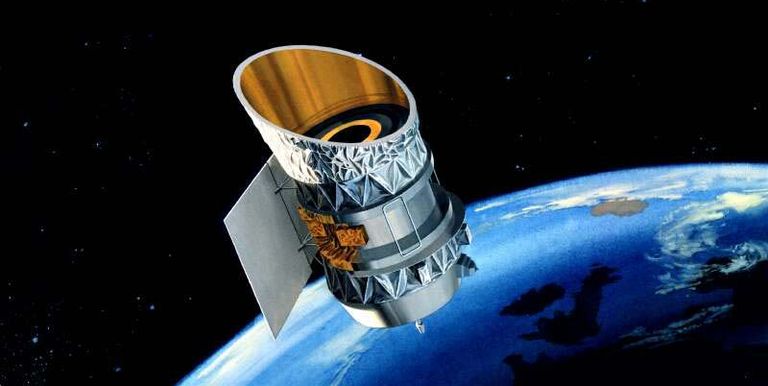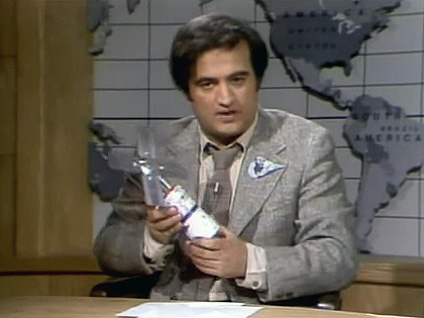
Posted on 01/28/2020 10:20:22 AM PST by Red Badger
What happens if the retired space telescope and former spy satellite crash into each other?
______________________________________________________________
Leo Labs, a venture-based company that monitors satellites in Low Earth Orbit, tweeted yesterday that it was tracking two satellites that will come within 15 to 30 meters of each other January 29, just before 6:40 p.m. EST. The two satellites are IRAS, a decommissioned NASA space telescope, and GGSE-4, a US Naval Research Lab intelligence satellite. They're set to sweep past each other in the skies above Pittsburgh at an altitude of about 559 miles above Earth's surface.
_____________________________________________________________________
LeoLabs, a company that monitors the trajectories of spacecraft in Low Earth Orbit, tweeted Monday afternoon that it was monitoring the close approach of two satellites that are likely to come within meters of each other on Wednesday, January 29. Were they to crash, the collision could send out a sprawling debris field, which could potentially impact other satellites in orbit.
The two satellites, NASA’s IRAS space telescope and the experimental U.S. Naval Research Lab satellite GGSE-4, will swing past each other at 6:39 p.m. EST at an altitude of about 559 miles in the skies above Pittsburgh, Pennsylvania. They’ll be hurtling along their orbit at a relative velocity of about 32,880 miles per hour and could swing within 50 feet of each other.
LeoLabs noted that, at the time of the tweet, the odds of a collision were about 1 in 100 and said the relatively large size of the two spacecraft increased the risk of a collision. “Events like this highlight the need for responsible, timely deorbiting of satellites and space sustainability moving forward,” the company tweeted.
NASA, the Netherlands Agency for Aerosace Programmes, and the U.K.'s Science and Engineering Research Council launched the Infrared Astronomical Satellite (IRAS) from Vandenberg Air Force Base in California on January 25, 1983. IRAS carried three scientific instruments: a survey array, a low resolution spectrometer and a chopped photometric channel.
For 10 months, the space telescope monitored the skies in infrared wavelengths. It discovered six new comets, charted our galaxy’s guts, and uncovered evidence of solid material—an indicator of planetary formation—around the stars Vega and Formalhaut. The 2103-pound telescope was put to pasture on November 21, 1983. image A model with the same design as U.S. Naval Research Lab satellite Poppy 5B. NRO
Meanwhile, the U.S. Naval Reconnaissance Office, the National Security Agency, and the Naval Research Lab launched the other spacecraft, GGSE-4 or POPPY 5b, from Vandenberg in 1967—one of a seven-satellite intelligence mission. Some information about the POPPY program was declassified in 2005. The 187-pound satellite has 59-foot-long gravity gradient booms that reach out into space—an obvious concern given the close distance in which the two satellites are projected to pass. It was decommissioned in 1972.
Scientists and space industry veterans founded LeoLabs in 2016 to better track and monitor the myriad satellites, spacecraft, and debris hurtling through Low Earth Orbit, according to its website. Based out of Menlo Park, California, the company has a worldwide network of phased-array radars that track objects in LEO in high definition.
As we’ve increasingly launched more and more spacecraft into Earth’s orbit, astronomers, engineers, and space industry experts have grown increasingly concerned about the Kessler Effect. Named for NASA space debris expert Don Kessler, the theory suggests a series of collisions between spacecraft in Earth’s orbit could spur a devastating series of chain reactions.
If there were enough impacts, the amount of space junk created would reach a critical mass, blanketing our planet in fog of debris and making it nearly impossible to safely launch spacecraft from Earth.
Former astronaut Ed Lu, who is LeoLabs’ vice president of strategic projects, put a call out to Pittsburgh-area amateur astronomers to train their telescopes on the sky tomorrow night. Needless to say, we’ll all be holding our breath, hoping these two satellites can slide past each other without incident.

A model with the same design as U.S. Naval Research Lab satellite Poppy 5B.
__________________________________________________________

IRAS (13777), the decommissioned space telescope launched in 1983, and GGSE-4 (2828), an experimental US payload launched in 1967.
(IRAS image credit: NASA)
It’s a two-dimensional problem. The collision cross section is determined by the projection of the respective satellites silhouettes onto the plane perpendicular to direction of their relative velocity at the moment of closest approach.
The third dimension, the dimension in the direction of the velocity doesn’t count because at some point the separation in that dimension *will* go to zero by definition, at exactly the moment of nearest approach. It does not influence whether or not there is a collision, only when. (You can assume that the satellites are not rotating during the duration of the collision event. If the velocity of rotation about its own body center were comparable to the orbital velocity, the centrifugal force would exceed 10,000 g’s and would already have torn the satellite apart.)
You got peanut butter on my chocolate! Hey! Wait a minute....yum.

Sunlight glinting off thousands of metal parts would need no oxygen..................
How about using them as ASAT target practice?
“Even as close as 15 meters the odds of them actually colliding are astronomically against. 15 meters is bigger than either satellite and we are talking about 3 dimensions rather than 2.”
Pointing out that this is the problem that NMD had to solve with hit-to-kill warheads. Executing that last course adjustment to make impact — that’s the trick.
“... and we are talking about 3 dimensions rather than 2.”
We are talking about two dimensions.
"The difference between the almost right word and the right word is really a large matter - 'tis the difference between the lightning-bug and the lightning."
-- Mark Twain
Massive NASA/NSA orgasm...
If the powers that be know a satellite has a finite life span, why do they not build and program it to burn itself up in the atmosphere?
Instead there will be even more space junk floating around.
What happens if the retired space telescope and former spy satellite crash into each other?
you get a bigger telescope on the spy satellite?
Yes, of course. Not to mention gobs and gobs of money.
Sounds like a job for The US Space Force. Shoot those suckers down.
You get a satellite that can see the numbers on your watch....................
They essentially let gravity do it.
Slow, very slow, but sure....................
Per the article, they have a relative velocity of about 32,880 miles per hour. That implies they are in very different orbits. In fact, IRAS in a near polar orbit and GGSE-4 in a highly inclined orbit, their individual velocities of about 16,000 miles per hour can in fact sum up to the cited relative velocity if one is heading northward and the other southward. So if IRAS even catches a tiny bit of a GGSE-4 boom there can be significant debris flying around.
It takes a lot of propellant to lower these satellites’ orbits sufficiently to reenter the atmosphere. Poppy was launched in 1967 and IRAS in 1983. Back then there were relatively few satellites and the collision/debris risk was minimal. Today the rule is that low earth orbit satellites should reenter no more than 25 years after they stop operating.
I take it the 25 year rule relies on physics to pull the satellites into the atmosphere?
It relies on the tiny bit of drag that the satellites experience from the super thin atmosphere up there. As they get lower and lower the atmosphere density increases so the process accelerates gradually toward reentry. Satellites today typically save some fuel to lower their orbit partway at end of service life and then let drag take over from there. Some newer concepts inflate a balloon or other appendage at the end of satellite life to provide a larger drag cross-section and speed up the reentry process.
Disclaimer: Opinions posted on Free Republic are those of the individual posters and do not necessarily represent the opinion of Free Republic or its management. All materials posted herein are protected by copyright law and the exemption for fair use of copyrighted works.